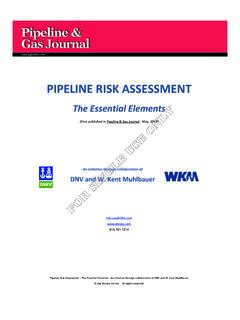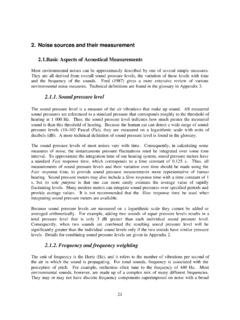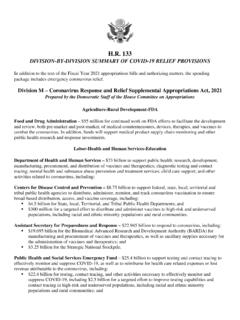Transcription of Skilled Nursing Facility Readmission Measure (SNFRM) …
1 April 2019 Skilled Nursing Facility 30-Day All-Cause Readmission Measure ( snfrm ) NQF #2510: All-Cause Risk-Standardized Readmission Measure Technical Report Supplement 2019 Update Prepared for Division of Value Incentives, Quality and Reporting Centers for Medicare & Medicaid Services Center for Clinical Standards and Quality 7500 Security Boulevard Baltimore, MD 21244-1850 Prepared by Bob Baker Katelyn Billings Laurie Coots Daras Michael DiBello Fang He Melvin Ingber Christopher Karwaski Lauren Komp Ye Zhang Pogue Anushi Shah Micah Segelman Laura Smith Sylvia Tan Alison Vadnais RTI International 307 Waverley Oaks Road, Suite 101 Waltham, MA 02542 RTI Project Number _____ RTI International is a registered trademark and a trade name of Research Triangle Institute. Skilled Nursing Facility 30-DAY ALL-CAUSE Readmission Measure ( snfrm ) NQF #2510: ALL-CAUSE RISK-STANDARDIZED Readmission Measure TECHNICAL REPORT SUPPLEMENT RTI International Project Director: Laura Smith, PhD Associate Project Director: Laurie Coots Daras, PhD Contract Officer Representative: Charlayne Van-Skinner, JD RTI International CMS Contract No.
2 HHSM-500- 2013-13015I Task Order HHSM-500-T0001 April 2019 This project was funded by the Centers for Medicare & Medicaid Services under contract no. HHSM-500- 2013-13015I. The statements contained in this report are solely those of the authors and do not necessarily reflect the views or policies of the Centers for Medicare & Medicaid Services. RTI assumes responsibility for the accuracy and completeness of the information contained in this report. iii CONTENTS Section 1. Introduction ..1 Section 2. Measure Specifications ..3 Measure Overview ..3 Data Sources ..3 Eligible Population and Outcome Definition ..4 Thirty-Day Readmission Window ..4 Planned Readmissions ..5 Eligible Stays: Exclusion Criteria ..5 Risk Adjustment and Statistical Approach to Measure Calculation ..7 Model Definition ..8 Calculating the Risk-Standardized Readmission Rate (RSRR).
3 8 Section 3. Results ..11 Overview ..11 Results from FY 2016 ..11 Results from CY 2017 ..13 Model Fit in FY 2016 and CY 2017 ..14 Appendices A: Planned Readmission Algorithm .. 17 B: Risk-Adjustment Model Results .. 31 List of Figures 1 Risk window for the snfrm .. 4 2 Distribution of SNFs observed Readmission rates and RSRRs, FY 12 3 Distribution of SNFs observed Readmission rates and RSRRs, CY 2017 .. 14 List of Tables 1 Frequency of denominator exclusions, FY 2016, CY 2017a .. 7 2 Distribution of SNFs observed Readmission rates and RSRRs, FY 11 3 Distribution of SNFs observed Readmission rates and RSRRs, CY 2017 .. 13 4 C-statistics for FY 2016 and CY 2017 risk-adjustment models .. 15 iv [This page intentionally left blank.] 1 SECTION 1. INTRODUCTION The Centers for Medicare & Medicaid Services (CMS) contracted with RTI International to develop the Skilled Nursing Facility 30-Day All-Cause Readmission Measure ( snfrm ; National Quality Forum [NQF] #2510), which estimates the risk-standardized rate of all-cause, unplanned hospital readmissions.
4 The snfrm was subsequently adopted for use in the Skilled Nursing Facility Value-Based Purchasing (SNF VBP) Program (80 Federal Register 46419). The SNF VBP Program, authorized by the Protecting Access to Medicare Act of 2014, began affecting payment determination in Fiscal Year (FY) 2019. More information on how the snfrm is used in the SNF VBP Program is provided on the CMS This technical report supplement provides updated analytic and risk-adjustment model results for the snfrm . Specifically, we present (1) Measure specifications and documentation for the snfrm as well as (2) Measure results from FY 2016 and calendar year (CY) Previous snfrm technical reports presented full testing and Measure results based on earlier 1 Available at 2 In the FY 2017 SNF PPS Final Rule, the SNF VBP program finalized a policy wherein the program moved from calculating Readmission measures on calendar years to fiscal years to mitigate operational concerns.
5 The FY 2019 SNF VBP program year used a baseline period of CY 2015 and a performance period of CY 2017. The FY 2020 program year uses a baseline period of FY 2016 and a performance period of FY 2018. Fiscal years will be used in all subsequent years. 3 snfrm NQF #2510: All-Cause Risk-Standardized Readmission Measure Draft Technical Report (March 2015): snfrm NQF #2510: All-Cause Risk-Standardized Readmission Measure Technical Report Supplement (April 2017): 2 [This page intentionally left blank.] 3 SECTION 2. Measure SPECIFICATIONS In this section, we describe in detail how the snfrm is specified and calculated. We first provide an overview of the Measure and subsequently, in Section , we describe the data sources used to calculate the Measure . Section discusses the eligible populations and how we defined the Measure outcome (unplanned readmissions), including a definition of the risk window (Section ) and an overview of the Planned Readmissions Algorithm (Section ).
6 Section is an overview of the snfrm inclusion and exclusion criteria. Finally, in Section , we discuss the snfrm risk-adjustment model and statistical calculation of the Measure . Please note that no changes have been made to the snfrm s technical specifications or risk-adjustment model since the April 2017 Technical Report Supplement. However, for our readers convenience, we include a summary of both the model and Measure specifications in this document. Measure Overview The snfrm estimates the risk-standardized rate of all-cause, unplanned hospital readmissions for SNF Medicare fee-for-service (FFS) beneficiaries within 30 days of discharge from a prior proximal acute hospitalization. The Measure is risk-adjusted for patient demographics, principal diagnosis from the prior hospitalization, comorbidities, and other health status variables that affect the probability of a hospital Readmission .
7 The snfrm includes Medicare FFS beneficiaries who were admitted to a SNF within 1 day of discharge from a hospital. The Measure is calculated annually using a 12-month period. Data Sources The snfrm applies only to Medicare Part A FFS beneficiaries and is calculated using Medicare eligibility and inpatient claims data. The eligibility files include information on date of birth, sex, reasons for Medicare eligibility, duration of Part A coverage, and enrollment periods in the FFS program. Medicare FFS claims include information on the dates of admission and discharge, relevant diagnoses and procedures, and indicators of dialysis use. Inpatient claims data files contain beneficiary-level SNF and hospital records. No additional information or data are needed from providers beyond what is present in claims and Medicare eligibility files ( , no additional data collection is required).
8 Following are the specific files used: Medicare Provider Analysis and Review (MedPAR) files Documentation available at Medicare Denominator files Documentation available at 4 Eligible Population and Outcome Definition The snfrm includes Medicare Part A FFS beneficiaries who were admitted to a SNF within 1 day of discharge from an inpatient prospective payment system hospital, critical access hospital (CAH), or PPS-exempt psychiatric or cancer hospital. The Measure assesses the Facility -level rate of all-cause unplanned hospital inpatient readmissions that occur within 30 days of discharge from a prior proximal hospitalization. Planned readmissions are not counted as readmissions. In order to define whether a Readmission is planned or unplanned, we use the RTI-modified version of the CMS Planned Readmission Algorithm, which includes additional procedures specific to post-acute care (PAC) settings ( see Section below and Appendix A).
9 This Measure is based on data for 12 months of SNF admissions. Because the Measure denominator is based on SNF admissions, it is possible that Medicare beneficiaries with more than one eligible admission may be included in the Measure multiple times within a given year. Thirty-Day Readmission Window The snfrm s Readmission window extends 30 days from the day a beneficiary is discharged from the prior proximal hospitalization. Figure 1 below illustrates this window. If the Readmission occurs within 30 days of discharge from the prior proximal hospitalization, it will be counted in the numerator of the Measure . This is true both for beneficiaries that are readmitted directly from the SNF and for those that are readmitted after SNF discharge. Figure 1 Risk window for the snfrm 30-DAY RISK WINDOW STARTS (Prior proximal hospital discharge)Prior proximal hospitalization30-DAY RISK WINDOW ENDS (Prior proximal hospital discharge + 30 days)Index SNF claimReadmission to an acute care hospitalReadmission is counted as long as it occurs within 30 days of discharge from the prior proximal hospital.
10 The Readmission may end the SNF stay or it may occur after the patient is discharged from the SNF. 1 day from prior proximal hospital discharge to index SNF admission 5 Planned Readmissions The snfrm uses a modified version of CMS s Planned Readmissions Algorithm4 to identify readmissions that are classified as planned and should therefore not be counted as readmissions. Planned readmissions are not counted against facilities because they are not indicative of poor quality of care. A planned Readmission is defined as any non-acute Readmission in which one of a set of typically planned procedures or diagnoses occurred. The Planned Readmission Algorithm is based on two main principles: 1. Some diagnoses and procedures should always be considered planned. 2. A separate, larger group of procedures should also be considered planned except in the presence of a disqualifying diagnosis.















